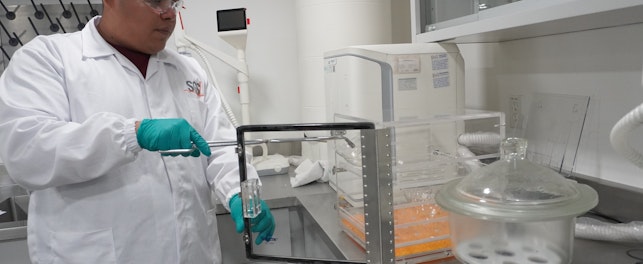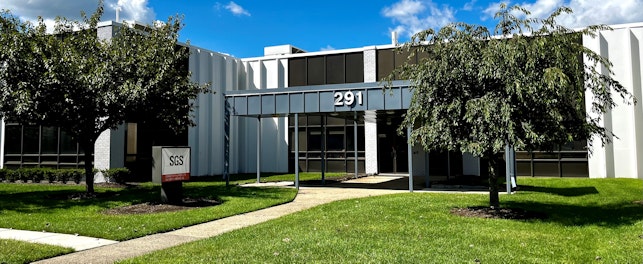More people are ‘staycationing’ because of travel restrictions and the COVID-19 lockdown. To maintain social and physical distancing rules, many are turning or returning to camping as a safe and healthy alternative.1 We look at camping safety and consider North American flammability standards for tents and sleeping bags.
A survey published by Kampgrounds of America (KOA) in May 2020 found that during the pandemic, US consumers were turning to camping as their summer holiday for a variety of reasons:
- 46% wanted to spend time outdoors after being inside during lockdown
- 41% said it was more affordable
- 37% felt it was easier to practice social distancing
- 28% felt it was safer
Among the other reasons expressed by respondents were the fact they did not want to fly due to concerns over safety and they liked the fact that camping offered a local holiday solution.2
KOA reports that 20% of the people booking into its sites in 2020 are first time campers. Part of the advantage of this form of holiday is that it has a relatively low barrier to entry – an inexpensive tent from a local store is all that is needed.3 At a time when people are looking for holidays that answer the twin concerns of safety and affordability, camping offers the perfect solution.
While being in the great outdoors is certainly healthy, it is not a pursuit without risk. Primary among these threats is the risk of fire.4 It should not be forgotten, tents and sleeping bags can restrict movement, making them difficult to escape from in the event of a fire.
Modern tents are manufactured with flammability in mind. Comparisons between older canvas tents and a modern tent show how flame-retardant technology has considerably increased the amount of time occupants have to escape a fire. Old canvas tents are quickly engulfed in flames, making them difficult to escape without injury.5
Safety First
Whatever technology is employed in the construction of the tent, it is always sensible to follow a few simple rules:
- Never use fuel-burning devices (e.g. disposable barbecues, camping stoves, camping heaters, lanterns, and charcoal grills) inside a tent
- Never use candles in or near a tent
- Flammable liquids and liquefied petroleum gas cylinders should be kept outside
- Avoid oil burning appliances
- Always cook outside and away from the tent
- Do not smoke inside the tent
- Consider an escape plan6
North American Flammability Standards
Manufacturers of camping equipment need to ensure the products they market comply with relevant legislation. In some regions, there may be no specific legislation for flammability in tents or sleeping bags, instead these items will come under general safety requirements. This does not mean they will not be recalled if they are found to be dangerous.7
Item 31.1 of Part II of Schedule I of Canada’s Hazardous Products Act defines the tent as a shelter made in whole or in part of fabric or other pliable materials.8 In April 2020, the Canadian General Standards Board (CGSB) published a new Canadian national standard for tent flammability and labeling requirements – CAN/CGSB-182.1-2020. This will replace Tent Regulation (SOR/2016-185), although the new standard remains voluntary until amendments are made to both the Tent Regulation and Toy Regulation.9
In the US, there is no specific legislation covering tent flammability at a national level. However, several states, including California, Louisiana, Massachusetts, Michigan, Minnesota, New York, and New Jersey, mandate CPAI-84 – Flammability of Camping tents.
It should be noted that, while CPAI-84 is mandated in some territories, this is now outdated for most modern materials. A preferable standard for manufacturers to follow is ASTM F3431-29 – Standard Specification for Determining Flammability of Materials for Recreational Camping Tents and Warning Labels for Associated Hazards. This is a revision of CPAI-84 and it follows the test methods and flammability requirements in CAN/CGSB-182.1-2020.
California also makes a distinction between small (less than ten people) and large tents. The fire marshal’s office states that the materials used in a tent must comply with the Title 19 small scale test, which does not differentiate between the materials used for flooring, walls and roof materials. For large tents, the Californian code can also be interpreted as requiring compliance with NFPA 701 – applicable when the tent functions as a public assembly space.
For sleeping bags, the relevant standards are:
- Canada: ASTM F1955-15 Standard Test Method for Flammability of Sleeping Bags
- USA: CPAI-75:1976A Rate of Burn Standard for Sleeping Bags
These are technically equivalent standards.
It is important for manufacturers to ensure they understand the relevant standards enforced in their target market(s). This might require an understanding of the purpose of the tent or the area of the tent. For example, BS 5576-1998 Specification for fire safety features of camping tents, awnings, trailer tents and caravan awnings, includes a clause which states that “the walls, roof and all other materials of a specifically designated cooking area shall be of flame-retardant material conforming to grade 5 of BS 6341”.
SGS Solution
The full effect of the COVID-19 pandemic is still being felt around the world and its positive impact on camping equipment sales will probably continue into 2021. Manufacturers need to be ready to ensure the tents and sleeping bags they supply are safe and conform to the right fire safety regulations enforced in their target markets.
SGS provides a comprehensive range of services to help manufacturers ensure their products comply with flammability legislation for a wide range of products, including tents and sleeping bags.
Watch our Flame Propagation of Textiles and Films video.
Learn more about SGS Fire Safety Testing Services.
China: Alex Mao
SGS Consumer and Retail Services
t: +86 21 61072906
US: Bobby Brown
SGS Consumer and Retail Services
t: +1 631 293 8944
References
1 Coronavirus: campsite bookings soar in UK after Spain quarantine & Camping offers a chance to enjoy great outdoors
2 North American Camping Report - COVID-19 Special Report
3 UK staycation boom lifts sales of camping gear
4 Father, 3 children die after tent fire in Pond Inlet, Nunavut
5 Fire Safety Cubs Tent Burning Test
6 Camping safety - fire safety tips
7 Active Leisure Tents Recalled Due to Fire Hazard & The Rapid Alert System for Non-Food Products
8 Industry Guide to Canadian Requirements for Tents
9 Safeguards 070/20



